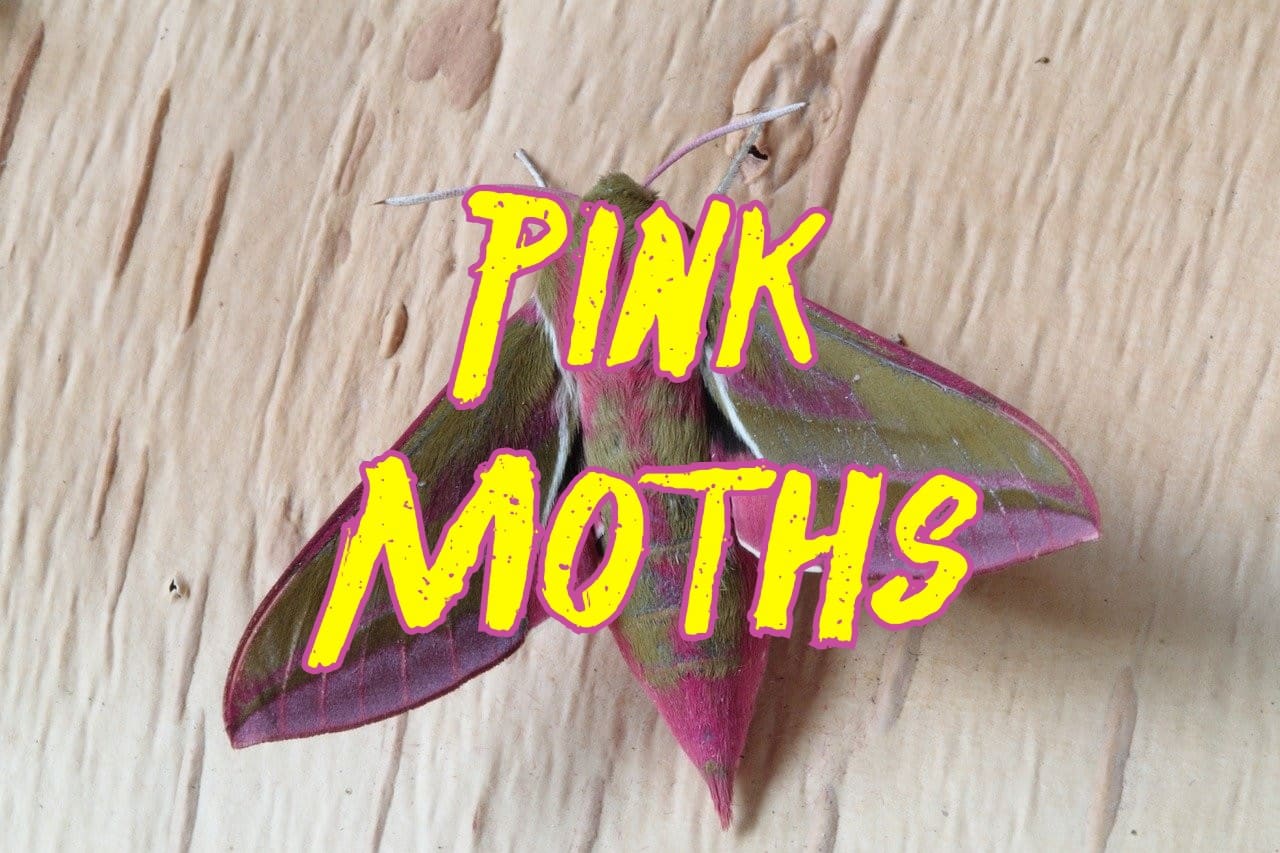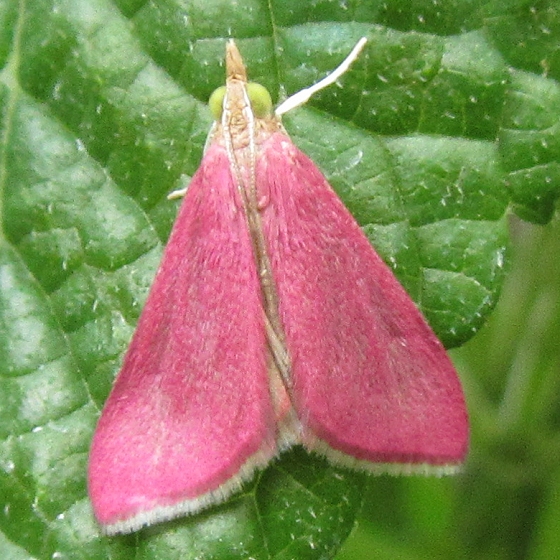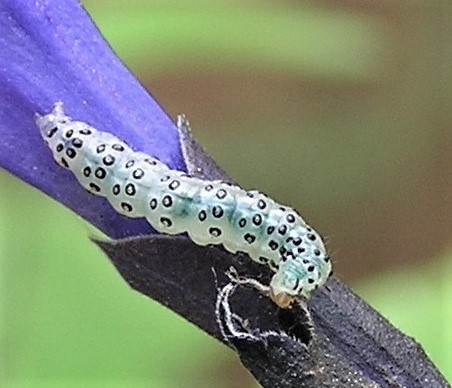Pink moths are a sight to behold. With their delicate pink wings and fuzzy bodies, they add a pop of color to the moth world Though not as common as drab brown or gray moths, pink moths exist in pleasing numbers and captivate observers with their vibrant hues.
I’ve always found moths intriguing, but pink moths are particularly special to me. As a child I remember being enthralled when I first noticed a pink moth perched on a flower in my grandmother’s garden. Its wings were a light blush color and its furry body a warm peachy tone. I had only seen mundane white and brown moths up until that point. Discovering the pink moth felt like stumbling upon a fairy in the garden!
While all moths play important roles as pollinators and food sources, pink moths hold a special place in the lepidopteran family. Let’s explore some of these rosy beauties and what makes them unique.
A Diverse Family of Pink Beauties
There are around 160,000 species of moths in the world, and over 11,000 species just in North America. Pink moths can be found across the United States and Canada, especially along the East Coast and Eastern side of the country. Specific species also reside in Europe, North Africa, and Asia.
Pink moths belong to different families, including giant silk moths like the rosy maple moth, as well as smaller species like mint moths and owlet moths. Some have pale pink shades while others display vibrant hot pink hues. Most have pink on their wings, but some also have pink legs, antennae, or abdomens.
While pink dominates many of these species, they often have accents of other colors like yellow, brown, cream, or black. The unique color combinations are what make them so striking.
Host Plants and Habitats
Pink moth caterpillars are selective about what host plants they’ll eat. Many favor maple, oak, and lilac leaves. Various wildflowers and herbs like evening primrose, mint, and rosemary also nourish caterpillars of certain species.
Identifying host plants helps pinpoint habitats for finding pink moths. For example, the rosy maple moth sticks near maple trees, while the bleeding flower moth caterpillar eats blazing star flowers in open meadows. Parks, forests, fields, and suburban gardens with the right mix of flora are prime pink moth territory.
Pink moths need suitable temperatures too. They thrive in warmer temperate climates. Some species like the rosy maple moth have expanded their range north in recent years as temperatures have risen.
Brief Lives, Big Impacts
One thing that surprises many people about pink moths is that most adult moths don’t actually eat. They lack functioning mouthparts and live only to mate and reproduce. Their lifespan is brief, often just 7-10 days.
However, in their larval caterpillar stage, they make up for lost time and eat enough plant material to fuel their upcoming transformation.Heavy feeding by social caterpillars can seriously defoliate host trees and plants.
While pink moth caterpillars damage some leaves, they rarely cause lasting harm. And the adults help pollinate flowers they land on, even if they don’t eat. Overall, they enrich biodiversity.
Standout Pink Species
Now that we’ve covered some background on pink moths, let’s look at a few of the most vibrant species:
Rosy Maple Moth
The rosy maple moth is arguably the pinkest of all pink moths. This giant silk moth has bright pink forewings trimmed in buttery yellow and a fuzzy pink body. Its habitat centers on maple trees, as the name hints. The green mapleworm caterpillars can ravage leaves when abundant.
Bleeding Flower Moth
Bleeding flower moths earn their dramatic name from hindwings tinted blood-red. But it’s the cotton candy pink forewings that draw the eye. These moths frequent meadows and grasslands.
Mint Moths
Several species of smaller mint moths exist, including the pink-dominated inornate mint moth. As expected, mint plants host the caterpillars. The moths’ pink and yellow patterned wings make them pop against green mint leaves.
Spanish Moth
This pale pink species has peppered brown forewings that resemble a moth-sized leopard print! Its elegant look makes it stand out. Spanish moths mainly live in Florida and the Southern Coast.
Elephant Hawk-Moth
This large Old World species has vibrant pink stripes across its robust body. Its wings shine in maroon, olive, and pink. The name comes from the caterpillar’s resemblance to a pachyderm’s trunk.
Appreciating Their Role
Pink moths captivate us with their beauty, but they also play key ecological roles. Their place in nature is about more than meets the eye.
As larvae, they break down plant matter and contribute to essential nutrient recycling. They become food for birds, bats, and other insectivores. As adults, they pollinate flowers, even without eating. And their sheer variety and presence indicates a healthy ecosystem.
So while it’s fine to admire their bright hues, remember pink moths help sustain all life, not just inspire humans. Their small lives represent the interconnectivity and balance of our natural world.

Stay informed about the Master Gardener program in Clackamas, Multnomah, and Washington Counties
As of early July 2020, there’s a new pest in town, and it goes by the name of Southern Pink Moth, alias Pyrausta inornatalis. The adult moth, found in SE Portland and submitted to the Oregon Department of Agriculture (ODA) was soon declared a new record for Oregon.
Less than two weeks later, a person from Milwaukie submitted an inquiry to Ask an Expert about a small pink moth resting on a salvia leaf in their garden. Its ID was soon verified as a Southern Pink Moth.

Normal distribution of the Southern Pink Moth is across the southern states, and are most common in the southeast. On the west coast, only four other specimens have been documented, those from Southern California.
Precious little info is available about this small pest. The only official details I was able to locate stated that the adult moth is about a half-inch long, with a wingspread of 13mm. The forewings are reddish-pink, the hindwings fuscous (brownish gray) and fringed. In the southern states, the adults fly March to November. The larvae bore into salvia flowers and flower buds.
Comments on a garden forum described the larvae is small (about a half-inch), almost translucent, and marked with dark dots. The larvae bore into the base of salvia flowers and flower buds. (As a result, they can be classified as budworms, and will annoy gardeners just as much as do the familiar geranium- and petunia-budworms.) Each pupa is in a filmy cocoon attached to the plant.

Bacillus thuringiensis (Bt) can be used effectively against budworms but timing is critical. One must apply Bt as soon as the first flower buds are damaged. Better yet, apply Bt as the eggs start to hatch such that Bt-coated tissue will be the caterpillars first bite. Unfortunately, Bt degrades quite rapidly when exposed to sunlight, so repeat applications may be needed. Fortunately, Bt targets caterpillars without damaging other insects.
A more direct control method is to check buds for tiny holes and then removing (or squishing) those that are infested. Other times, the caterpillar will still be on the outside of the bud. Cold winters are believed to kill the pupae, with temperatures of 20F or less able to reduce the next season’s population.
No control guidelines have been issued by ODA or OSU as yet. But since this is a newly introduced species, ODA would be interested in any reports and locations so that they can map the spread of this species. Contact ODA at 503-986-4636.
Resources
The Canadian Entomologist” – https://archive.org/stream/canadianentomolo17ento#page/57/mode/1up
BugGuide: s of adults, larvae and pupae – https://bugguide.net/node/view/81627
Multiple s at “Butterflies and Moths of North America” – lg larva https://www.butterfliesandmoths.org/species/Pyrausta-inornatalis
Discover Life: s adults (resting and pinned), also a distribution map – https://www.discoverlife.org/mp/20q?search=Pyrausta+inornatalis&mobile=close&flags=glean:
BugGuide – of adult https://bugguide.net/node/view/1526170/bg
BugGuide – of larva https://bugguide.net/node/view/229077/bg
7 Spectacular Moths in Slow Motion!
FAQ
What are the pink moths?
Adult rosy maple moths are distinguishable by their bright pink and yellow color, although exact coloration can vary significantly. Both sexes have a wingspan of 32–55 mm. Their bodies are woolly, and typically yellow on the top and pink on the underside, but can range to cream or white.
Is a rosy maple moth poisonous?
-
Not Poisonous:Rosy maple moths themselves are not poisonous, and their larvae (caterpillars) are also not poisonous.
-
Aposematism:The bright coloration of the moths is thought to be a form of aposematism, a warning signal to predators that they might be unpalatable or dangerous.
-
Defense Mechanism:The bright colors are a way for the moths to trick predators into thinking they are poisonous and therefore not worth eating.
-
Caterpillar Diet:The caterpillars feed on maple leaves, and the damage they cause is generally minimal.
-
Adults Don’t Eat:Adult rosy maple moths do not have mouths or digestive systems, so they don’t eat at all.
-
Important in Ecosystem:Rosy maple moths and their caterpillars are part of the food chain, serving as food for birds and other predators.
Are rosy moths rare?
The rosy maple moth is not rare, but it does suffer from habitat loss. Deforestation poses a major threat to the moth because it relies on specific trees for survival. The rosy maple moth is harmless to humans, but its caterpillars can cause a rash if they come into contact with your skin.
Are pink silk moths real?
The rosy maple moth is a beautiful silk moth distinguishable by its vibrant pink and yellow color. These insect rockstars live in deciduous forests with abundant maple trees in the eastern United States.
What is a pink moth?
A pink moth could be different Lepidoptera and Saturniidae species, such as Southern pink, Rosy maple, Primrose, Elephant hawk, or Underwing moth. The Southern pink moth (Pyrausta inornatalis or Salvia guaranitica) has an average wingspan of about half an inch. This is why it’s regarded as a small moth species.
Where do yellow and pink moths live?
Some of the most common species of yellow and pink moths are found in The Northern Hemisphere, including in North America. Multiple Eastern US states host these types of colorful moths, together with states in the South or on The West Coast. Across the world, The Palearctic Region is the main distribution area of yellow and pink moths.
Are moths yellow or pink?
Bright and as colorful as butterflies, moths may have yellow and pink nuances that dominate the appearance of their forewings, body, and hindwings. Some of the most common species of yellow and pink moths are found in The Northern Hemisphere, including in North America.
What is the smallest pink moth?
Volupial Mint Moth Volupial Mint Moths (Pyrausta volupialis) are some of the smallest pink moths in the country. It measures up to 10.5mm in wingspan. Its reduced size still allows it to be highly visible as the wings of the species are mostly pink. This moth has pink wings with yellow lines and marks.
Are pink moths rare?
Pink moths are a rare sight but they exist in high numbers in certain areas around North America, Europe, North Africa, and Asia. Pink moths have a high presence on the Eastern Coast and in states on the Eastern side of the US. They are present in both tropical and temperate climates.
Why does a volupial mint moth have pink wings?
Its reduced size still allows it to be highly visible as the wings of the species are mostly pink. This moth has pink wings with yellow lines and marks. These colors are inherited from the pink, yellow, and green Volupial Mint Moth caterpillar.
